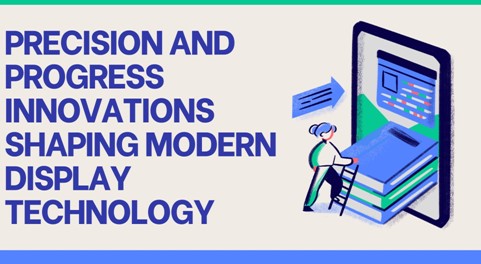In the realm of modern display technology, advancements in testing and calibration are driving new levels of efficiency and quality. Muralidhar Manohar Shenoy,explores these innovations, highlighting how emerging methodologies are transforming the industry. This article delves into the evolution of display technology, automation in quality control, and the integration of AI-driven solutions.
The Evolution of Display Technology
Over the years, display technology has evolved from basic LCD screens to high-resolution OLED and Micro LED displays. Today’s professional-grade monitors feature pixel densities exceeding 500 PPI, color accuracy within a single Delta E where Delta E (ΔE) is a measure of the color difference, indicating how perceptible a color variation is to the human eye.These advancements not only enhance visual clarity but also improve power efficiency, making modern displays more sustainable and reliable.
The integration of advanced materials and manufacturing processes has further revolutionized display performance. Quantum dot technology enables wider color gamuts exceeding 95% DCI-P3, while local dimming algorithms deliver contrast ratios above 1,000,000:1. Mini LED backlighting systems provide precise brightness control across thousands of zones, ensuring HDR content is displayed with exceptional depth and detail. These innovations continue to push the boundaries of visual excellence in professional applications.
Automating Quality Control with Advanced Testing
To meet the increasing demand for high-performance displays, manufacturers have integrated automated optical inspection (AOI) systems into production lines. These systems, leveraging high-resolution imaging and machine learning, detect defects at a microscopic level, reducing defect escape rates by up to 95%. The implementation of multi-stage inspection protocols ensures higher accuracy, allowing manufacturers to enhance production throughput and reduce overall costs.
The Science of Display Calibration
Precise calibration is crucial to maintaining consistency across large-scale manufacturing. Today’s advanced calibration systems use high-speed spectroradiometers and 3D color space mapping to fine-tune luminance, color accuracy, and gamma correction. These methods significantly improve unit-to-unit consistency, ensuring that every display meets stringent quality standards. Automated calibration further reduces variability, minimizing rework rates and maximizing manufacturing efficiency.
The implementation of closed-loop feedback systems and real-time monitoring capabilities enables dynamic adjustments throughout the production process, while integrated quality management systems provide comprehensive traceability and documentation of calibration results, supporting continuous process improvement initiatives.
AI and Machine Learning in Display Testing
Artificial intelligence has become a game-changer in display testing and calibration. Modern AI-driven systems can analyze vast amounts of data in real time, identifying patterns that might escape traditional testing methods. Deep learning algorithms improve defect classification accuracy to nearly 99%, while predictive maintenance reduces downtime by proactively addressing potential faults before they impact production.
These AI systems also enable automated parameter optimization, continuously refining display characteristics based on real-world usage data and environmental conditions. ML integration with optical tools revolutionizes quality control, ensuring consistency while reducing human intervention and waste.
Enhancing Manufacturing Efficiency
With the adoption of automated quality control and calibration, manufacturing lines have seen remarkable efficiency gains. Production facilities utilizing these advanced systems report reductions in defect rates from 2.8% to below 0.3%. Additionally, the integration of real-time monitoring has improved Overall Equipment Effectiveness (OEE) to above 85%, while minimizing production downtime by nearly 45%.
The Future of Display Technology
Looking ahead, the integration of AI, automation, and advanced metrology techniques will continue to drive progress in display manufacturing. Emerging technologies such as real-time self-adaptive calibration and machine learning-based inspection will further enhance production efficiency and display performance.
Additionally, quantum dot technology and microLED advancements are expected to revolutionize display quality, while flexible and foldable display manufacturing processes will become more streamlined and cost-effective. Smart manufacturing systems incorporating digital twins and predictive maintenance will optimize production yields, reduce waste, and accelerate time-to-market for next-generation display products.
In conclusion ,Testing and calibration are at the forefront of modern display manufacturing, ensuring superior quality, efficiency, and reliability. As these methodologies continue to evolve, they are setting new standards in the industry, paving the way for more advanced and sustainable display solutions. Muralidhar Manohar Shenoy’s insights into these developments underscore the transformative impact of precision engineering in display technology.

































